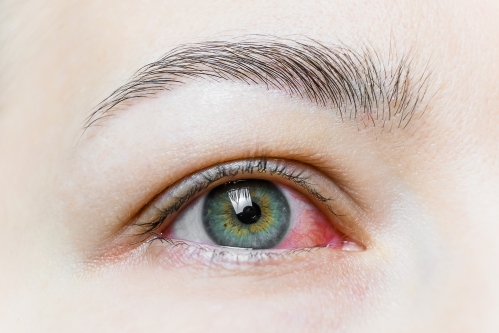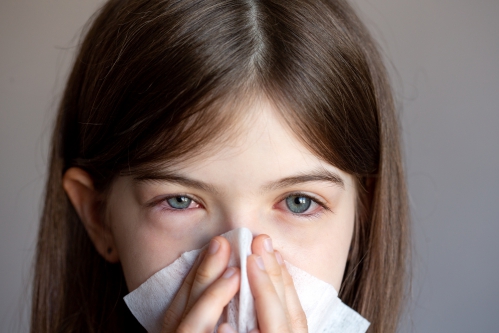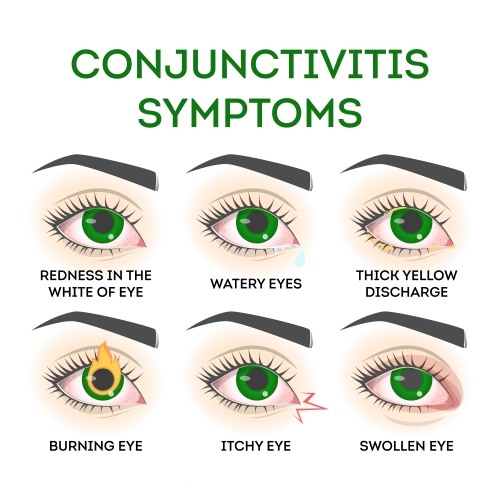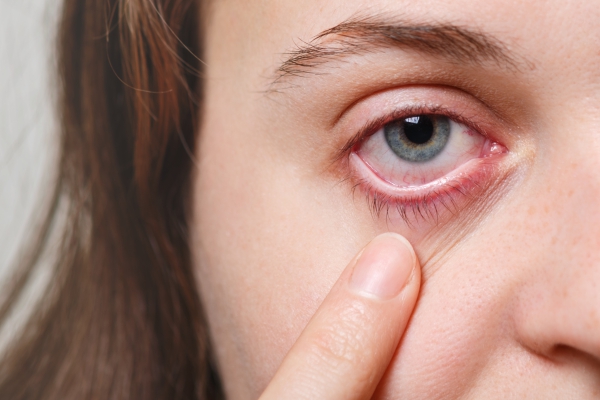What is conjunctivitis?
Conjunctivitis, also known as pink eye, is a common eye disorder affecting the conjunctiva. The conjunctiva is a transparent membrane that covers the inner part of your eyelid as well as the white part of your eyeball. When this membrane becomes infected or inflamed, this condition is known as conjunctivitis. It is usually a benign and self-limiting condition.
Conjunctivitis is the most common cause of a red eye and can easily be treated. It is also the most common non-traumatic eye complaint in the emergency department. This eye condition can be classified into infectious and non-infectious conjunctivitis. Conjunctivitis can occur in both adults and children.
What are the causes of conjunctivitis?
Conjunctivitis can be due to infectious or non-infectious causes. Infectious conjunctivitis can further be classified into bacterial and viral conjunctivitis.
Bacterial conjunctivitis
Bacterial conjunctivitis, as the name suggests, is caused by an infection due to bacteria. Some examples include Staphylococcus aureus, Streptococcus pneumoniae, Haemophilus influenza and Moraxella catarrhalis. Staphylococcus aureus is the most common cause among adults while the others are most common among children.
Bacterial conjunctivitis is highly contagious. It can be transmitted by direct contact from one person to another or through contaminated objects or surfaces. This can happen when an infected person has touched his/her eyes and then touched a surface such as a door handle or any other object.

Viral conjunctivitis
Viral conjunctivitis is most commonly caused by adenovirus. This virus is also responsible for common cold. Similar to bacterial conjunctivitis, viral conjunctivitis is also highly contagious. It is transmitted through contact, direct or indirect, with the eye secretions from an infected individual.
Other viruses such as herpes simplex virus, varicella-zoster virus and coronavirus disease 2019 (COVID-19) can also lead to conjunctivitis.
Allergic conjunctivitis
This type of conjunctivitis is caused by airborne allergens, which are particles found in the air that can cause allergy. It occurs when these particles come in contact with your eye. According to the type of allergen, allergic conjunctivitis may occur suddenly, during specific seasons or all throughout the year. When the allergen comes into contact with your eye, it triggers a reaction leading to the release of antibodies which further leads to the release of inflammatory substances in your eye.
Toxic conjunctivitis
This type of conjunctivitis can occur as a result of a chronic inflammation causes by an offending agent. The offending agent may be a medication or a preservative.
What are the risk factors for conjunctivitis?
You are at increased risk of having conjunctivitis if you:

- Have been exposed to allergens
- Have been in close contact with someone with conjunctivitis
- Use contact lenses
What are the symptoms of conjunctivitis?
The main symptom present in all types of conjunctivitis is a red or pink eye. Other symptoms present may vary among the different types of conjunctivitis. These symptoms may include the following:
- Redness
- Watery or mucus discharge from the eye
- Burning sensation in the eye
- Foreign body sensation in the eye often described as sandy
- Morning crusting of the eye
- Thick discharge from the eye which may be yellow, white or green
- Fever
- Swollen nodes in the neck
- Sore throat
- Runny nose
How is the diagnosis of conjunctivitis made?
Your doctor will start by asking you a series of questions to know more about your symptoms. These may include the following questions:
- When did you first notice your symptoms?
- Has anyone in your surrounding experienced the same symptoms?
- How is the discharge from your eye?
- Do you have a history of allergy?
If you experience the following symptoms, your doctor may refer you to an eye specialist:

- Changes in vision
- Inability to keep your eye open
- Increased sensitivity to light
- Severe headaches
- Nausea
- Trauma to the eye
To complete the evaluation, your doctor will examine your eye. There are no specific tests done to make the diagnosis of conjunctivitis. In some rare cases, a sample of your eye discharge may be taken for further examination.
How is conjunctivitis treated?
It is important to make a proper diagnosis for conjunctivitis as the treatment will depend on the cause.
Viral conjunctivitis
The main goal of the treatment is to relieve the bothersome symptoms. Treatment options include the following:
- Antihistamine eyedrops: These medications work by relieving the irritation present in conjunctivitis. They are available over the counter, however, it should be used with precaution. It is advised to use it only in the affected eye to prevent spread to the other one. Wash your hands thoroughly after each application.
- Warm or cool compress: This can also be done in an attempt to relieve irritation and inflammation in the affected eye.
Bacterial conjunctivitis
In bacterial conjunctivitis, antibiotic eyedrops or ointments should be applied to get rid of the bacterium causing the disease. The earlier the treatment is started, the shorter the duration of your symptoms will be. Symptoms usually get better within 24-48 hours after starting the treatment.

If you wear contact lenses, you should avoid wearing them during the first 24 hours of treatment initiation or until your eye is no longer red.
It is advised that you avoid contact with other people when you have viral or bacterial conjunctivitis as they can spread easily.
How can conjunctivitis be prevented?
Since viral and bacterial conjunctivitis spread through contact with contaminated eye secretions, simple hygiene measures can easily help in the prevention of transmission. These measures include the following:
- Do not share handkerchiefs, tissues, towels, cosmetics, bedsheets or pillows with uninfected people if you have conjunctivitis.
- Isolate yourself or stay at home if you are infected to minimise the risk of transmitting to others.
- Avoid contact with infected people.
- Wash your hands thoroughly with water and soap regularly. The use of an antibacterial soap can further minimise the risk of transmission. It is highly recommended to do so before and after eating, touching your eyes or face, coughing or sneezing.
- Use a hand sanitizer if soap and water is not available. Make sure to properly spread the sanitizer on the entire surface of your hands.
Source:
Khurana, A., 2007. Comprehensive Ophthalmology. 4th ed. New Delhi: New Age International (P) Ltd., Publishers.
Jacobs, D., n.d. Conjunctivitis
Azari AA, Barney NP. Conjunctivitis: a systematic review of diagnosis and treatment. JAMA 2013; 310:1721.
Silverman, M., 2018. Acute Conjunctivitis (Pink Eye)









